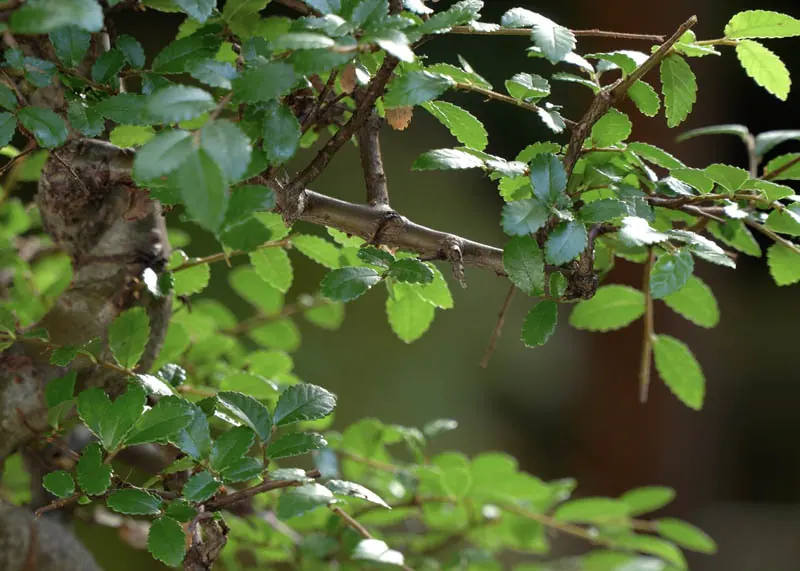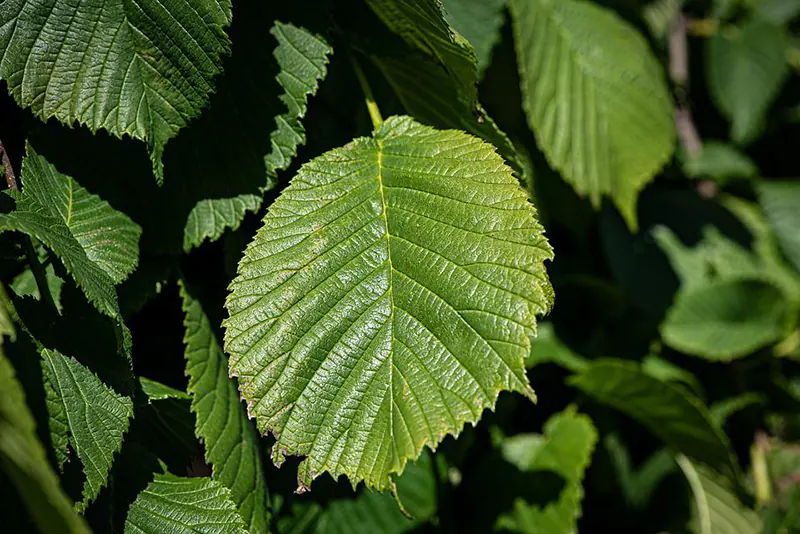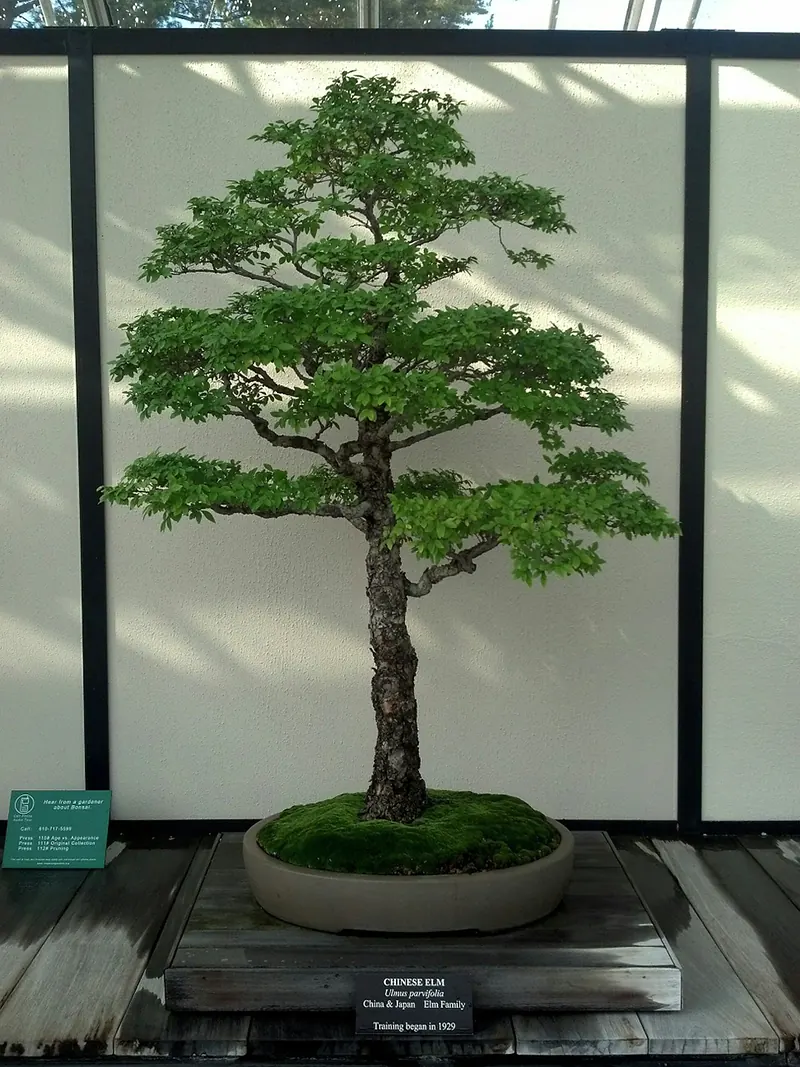Chinese Elm Scientific Classification
The green cascade Japanese maple is a wonderful tree to start growing. The tree’s leaf structure is lace-like and offers an interesting texture to look at. This small-mounded tree has a weeping habit responsible for most of its beauty.
Throughout the article, we’ll explain how you can best care for this tree and ensure it stays beautiful all through the year. We’ll also explain which propagation methods are best so you can grow new trees with ease. Whether you keep it indoors or outdoors, the green cascade Japanese maple is one of the prettiest bonsai trees to grow.

Here are the topics we’ll cover:
Chinese Elm Scientific Classification
If you’re only interested in the Chinese Elm scientific classification and nothing else, here’s a quick listing. However, we recommend you stay tuned to the rest of the article to see how the species ended up in this taxonomy and what sets it apart from other bonsais.
Kindom | Plantae |
Clade | Angiosperms |
Clade | Eudicots |
Clade | Rosids |
Order: | Rosales |
Family | Ulmaceae |
Genus | Ulmus |
Species | U. parvifolia |
Where Does the Name Chinese Elm come from?
There’s no lengthy mysticism when it comes to the origin of the Chinese Elm name. The Elm title comes from the genus it finds itself in. While it’s native to China, it’s also to other locations, such as Japan, Vietnam, India, and North Korea. We need to dig a little deeper to see why ‘Chinese’ was added.
Our tale goes back to 1794 when James Main visited China. He was a Scottish botanist who worked as a gardener in Edinburgh. The English merchant, George Hibbert, hired him to travel to China so he could collect some plants for him. One tree among them was an Elm, which is the first time the Chinese Elm entered the U.K.
The Chinese Elm is an Angiosperm
When it comes to understanding the taxonomy of plants, there are two major divisions you should remember for bonsais. Gymnosperms are the homes of conifers and other plants where the seeds are produced on the outside. Angiosperms are the flowering plants of the plant kingdom, developing seeds inside the fruit.
What makes this clade so fascinating is that scientists have discovered fossil remains of flowering plants from about 125 million years ago. There are 416 Angiosperm families, containing a total of 300,000 species that we know of. The Chinese Elm is only one of them in this scientific classification.

The Eudicots
The Chinese Elm scientific classification stems from Eudicots. It’s one of five clades within the Angiosperm taxonomy, the others of which are Monocots, Magnoliidae, Ceratophyllales, and Chloranthales. The name is derived from the pair of fake seed leaves that appear after germination, known as dicotyledons.
The main feature that sets Eudicots apart from the other clades, besides the dicotyledon, is that the pollen has a grooved structure. The term for it is tricolpate. The taxonomical structure is further broken down into core and basal eudicots, while the core clades have Superrosids and Superasterids. It’s within the former that we now spend our attention in the following section.
The Rosids Clade
From this clade, you can already see how the Chinese Elm is closely related to roses in the scientific classification. Rosids have two further clades that hold the orders beneath them; Fabids and Malvids. Between the two of them, there are about 20 orders together.
Scientific discoveries present many fossils of Rosids stretching back to the Cretaceous period. What makes this clade stand out is that there are many nitrogen-fixing flowering plants in it. In other words, the roots help the soil to improve in condition with nitrogen bacteria on the nodules. This attribute isn’t seen in all the Rosid plants, though.

An Order of Rosales
The Rosales order has most of the nitrogen-fixing plants within it. It falls under the Fabids sub-clade within Rosids, sharing the taxonomical branch with Fabales, Fagales, and Cucurbitales. There is a strong connection between these clades, each with several families.
Under Rosales, there are 9 families, 260 genera, and 7,700 species. While this may not seem important, it does give an impression of how many cousins the Chinese Elm has in this scientific classification. The order is mostly defined by its ten chloroplast genes and two nuclear genes.
You may recognize some plants from the Rosales order. They include strawberries, raspberries, blackberries, pears, plums, peaches, and so much more. The rose, hemp, buckthorn, and nettle families are some of the more well-known ones, but of course, our main interest here is the elm family.
The Ulmaceae Family
We’re finally at the Elm family. Of the 260 genera in the Rosales order, Ulmaceae only has seven. There’s only 0.006% of the order’s species here at a grand total of 45. It might not be a massive family, but it holds several trees you’ll recognize.
The Ampelocera genus mainly has rainforest trees you’ll find between Brazil and Mexico, while Hemiptelea only has one species in Asia. Holoptelea has two deciduous trees, and Phyllostylon has three. Planera is a genus you may recognize, as it has the singular planertree or water elm.
That leaves us with two remaining genera for the Chinese Elm scientific classification. Zelkova is the cousin to the elms, containing six species. What sets it apart from elm trees is that the branches are never winged or forked. You’ll usually find them as shrubs or tall trees.

Elm as a Genus
We finally reach the scientific classification that relates the most to the Chinese Elm. Welcome to the Elm genus, Ulmus. It has the largest collection of species in the Ulmaceae family, which is why it carries the name in the taxonomy.
Many variants and hybrid elms have been developed in an effort to combat Dutch Elm Disease. The fungus destroys most of the elms in this genus, with the exception of the Chinese Elm. While there are about 30 to 40 classified species, the numbers may actually be more if you include subspecies and variants.
There are two subgenera called Indoptelea and Oreoptelea, with the former only having one species and the other holding many. The third subgenus is where you’ll find the Chinese Elm, within Ulmus, or the true elms as we like to call them. It contains five sections, but the one we want you to focus on is Microptelea.
To get a better view of this representation, here’s a breakdown:
- Ulmus
- Ulmus
- Microptelea
- Ulmus parvifolia
- Microptelea
- Ulmus
As you can see, we finally find our way through the genus to where the Chinese Elm lies as a species in the scientific classification.
Chinese Elm Species
The Chinese Elm shares the Microptelea section with only one other species, the Korean Elm. As an indication of its relationship with the American Elm, Ulmus americana is in the Oreoptelea subgenus within the Blepharocarpus section. Both the Chinese and Korean elms have excellent resistance to diseases.
We have a detailed care guide for the Chinese Elm, so we’ll only share some interesting facts here. There are a few variants you’ll find, specifically as bonsais. Catlin is favored in many countries for its dwarf style and tiny serrated leaves, while many prefer the Drake version for its peeling bark.
There are only a few features that set apart the different types of Chinese Elm trees. One common mistake is identifying it as a Siberian Elm. The latter is part of the Foliaceae section in the Ulmus subgenera, so they are closely related.
If you’re interested in the differences, check our Siberian Elm vs. Chinese Elm comparison guide.

Why is the Chinese Elm Scientific Classification so Important?
You’ve delved far into our Chinese Elm scientific classification article and may be wondering why it’s so important that we needed to make a guide on it. You’d be surprised how many people search this query every day, especially those that are inquisitive as to where their small bonsai fits in when it comes to taxonomy.
Besides curiosity, the scientific classification shows us how the Chinese Elm is related to other trees and plants. The insight will open your eyes when you water and care for your bonsais, realizing how they may be related. It will also assist you in identifying the elm correctly.
Final Words
The Chinese Elm has a beautiful taxonomy that’s hidden until you take a deeper look at it. One aspect of botany we love is investigating scientific classifications, giving our bonsais more meaning. It may seem meaningless at first until you check it out for yourself.
If you enjoyed this approach, be sure to check out the Bougainvillea scientific classification. We’re sure you’ll love that article just as much if science is your thing.
Should you be a bit lost as to how it works, read our guide on how taxonomy works.







